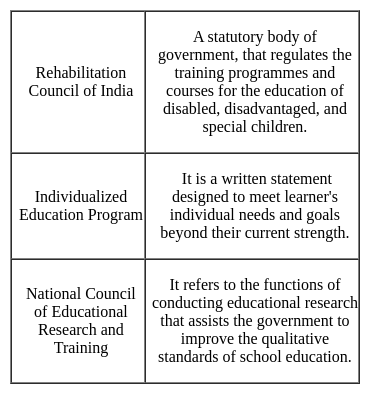Test: Education & Leadership (Creating Community) - Software Development MCQ
20 Questions MCQ Test - Test: Education & Leadership (Creating Community)
School education professionals can help parents with their changing roles in all of the following ways, except:
The policies for the development of the teacher education system is designed by:
Research and fieldwork show that _______ improve(s) schools, strengthen(s) families, build(s) community support and increase(s) students' achievement and success.
Which of the following would be the most appropriate way to attract children in the school for their education?
School community partnership involves ______.
I. Use of school or neighbourhood facilities and equipment
II. sharing resources
With reference to school-community relations, which of the following statements are correct?
I. The most important factor is the behavior of the teacher leader.
II. It is dependent on the values, characteristics, skills and actions of the teacher leader.
Which one of the following statements is correct with respect to the various roles of a teacher?
I. Teacher acts as a school-community bridge.
II. The teacher also acts as the head of administration in his district.
Community participation in school culture is essential because ________
Role of community nurse in school Health program, EXCEPT
With reference to community participation, which of the following statements is correct?
I. Community campaign brings a negative change in educational activities.
II. Community campaigns bring children to school.
Assertion (A): School and life at community should not be linked in any way for effective teaching-learning process.
Reason (R): Linking school and community delimits students' opportunities for social participation.
Choose the correct option.
With reference to the contribution of the community to education, which of the following statements is correct?
I. Providing financial assistance.
II. Academic and administrative support.
III. Setting the course.



















